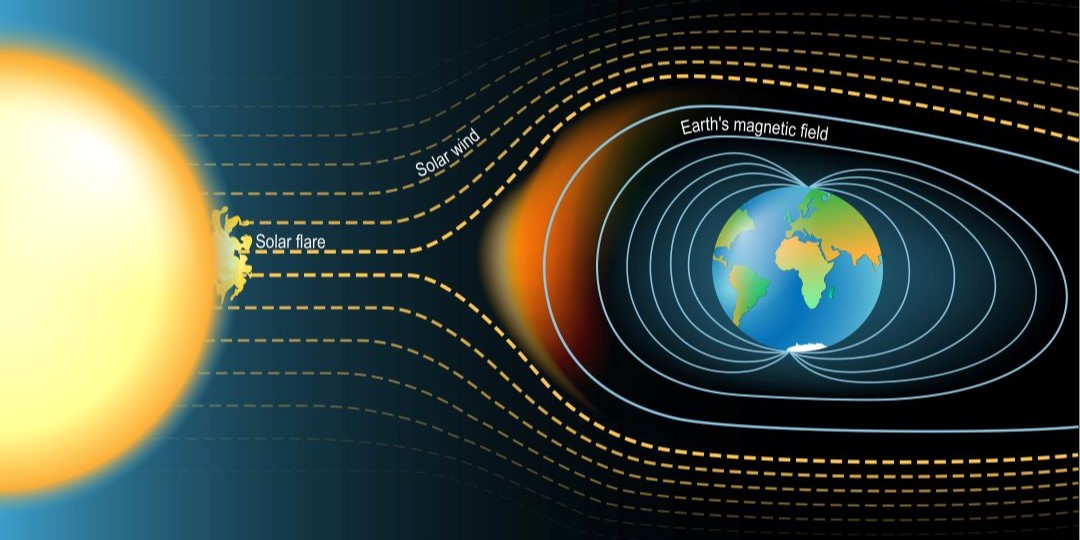by Joe Bennett – Senior NERC Reliability Specialist, NAES Corporation
A geomagnetic disturbance (GMD), also known as a geomagnetic storm, is a major event in Earth’s magnetosphere. It’s caused by a very efficient transfer of energy from solar wind into the space environment surrounding Earth. Solar wind shockwaves result from a solar flare that is followed by coronal mass ejections (CMEs) of charged and magnetized particles into space.

Solar flares followed by CMEs happen fairly often, but the majority do not produce a GMD. It depends on the magnitude of the flare, the direction in which the particles are emitted and the orientation of the magnetic field. Scientists can see when a solar flare is coming and determine when it will reach Earth, but it’s a lot harder to determine if a solar flare will actually cause a GMD and, if it does, what its magnitude will be.
GMDs are of particular concern to the reliability of the nation’s power grid because they can cause geomagnetically induced currents (GICs). To address this, NASA has been working on a project called Solar Shield that aims to determine which transformers on the grid would potentially be affected by a GMD.
GICs cause variations in electrical current in the magnetosphere and the ionosphere (layers of our atmosphere),which in turn adversely affect Earth’s magnetic field. They induce currents in conductors such as power lines that can affect power grid transformers. Specifically, GICs can cause ‘half-cycle saturation’ of high-voltage Bulk Electric System (BES) transformers, which can lead to increased consumption of reactive power and create disruptive harmonics that could potentially cause the BES to collapse.
Further, half-cycle saturation from GICs can potentially damage BES transformers by overheating them. NERC and the U. S. Department of Energy have determined that the increase of high-voltage power lines and electric energy usage in recent years has elevated this risk.
If a disturbance occurs that is large enough to damage transformers, it could take serious time to restore the grid. Replacing transformers can require a lead time of as much as 12 months. If this were to happen on a large scale, the sheer number of units requiring replacement would further contribute to the downtime.

Motivated by these concerns, FERC called for development of a NERC standard that requires transmission planning for GMDs. This resulted in the currently effective TPL-007- 1 – Transmission System Planning Performance for GMD Events. Under this standard, the nation’s planning entities are currently in the process of developing GIC system models for their respective planning areas using data and information provided by Generator Owners.
Over the phased-in implementation of the standard, certain Generator Owners may need to conduct thermal impact assessments of their BES power transformers. These will ultimately support planning entities’ development of an assessment of their vulnerability to GMD events and a corrective action plan to mitigate the potential threats described above.
